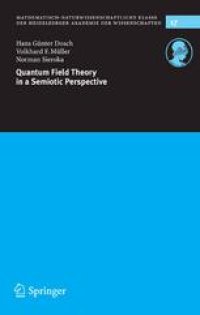
Ebook: Quantum Field Theory in a Semiotic Perspective
- Tags: Quantum Optics Quantum Electronics Nonlinear Optics, Quantum Physics
- Series: Schriften der Mathematisch-naturwissenschaftlichen Klasse der Heidelberger Akademie der Wissenschaften Nr. 17 (2005) 17
- Year: 2005
- Publisher: Springer-Verlag Berlin Heidelberg
- Edition: 1
- Language: English
- pdf
Viewing physical theories as symbolic constructions came to the fore in the middle of the nineteenth century with the emancipation of the classical theory of the electromagnetic field from mechanics; most notably this happened through the work of Helmholtz, Hertz, Poincaré, and later Weyl. The epistemological problems that nourished this development are today highlighted within quantum field theory.
The present essay starts off with a concise and non-technical outline of the firmly based aspects of relativistic quantum field theory, i.e. the very successful description of subnuclear phenomena. The particular methods, by which these different aspects have to be accessed, then get described as distinct facets of quantum field theory. The authors show how these different facets vary with respect to the relation between quantum fields and associated particles. Thus, by emphasising the respective role of various basic concepts involved, the authors claim that only a very general epistemic approach can properly account for this diversity - an account they trace back to the philosophical writings of the aforementioned physicists and mathematicians. Finally, what they call their semiotic perspective on quantum field theory gets related to recent discussions within the philosophy of science and turns out to act as a counterbalance to, for instance, structural realism.